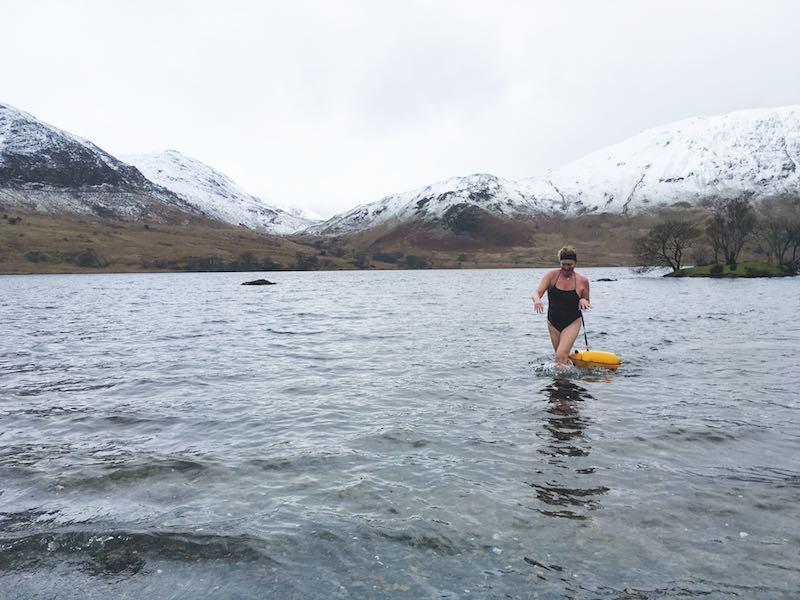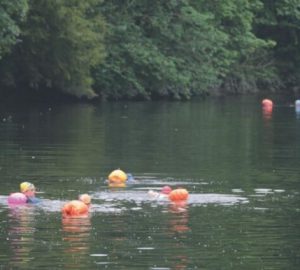
How to rediscover your swimming flow after a break
I have days when swimming feels smooth and relaxing. It flows and I’m at one with the water. Other times, it’s a struggle. Something stops working. Waves smack my face when I turn to breathe, my arms are heavy, my hands scrabble through the water, the timing is awkward. I feel clumsy and uncoordinated.
Coming back to swimming after lockdown, not only was I much slower than before, swimming was difficult. I couldn’t find the flow. It wasn’t just fitness I’d lost, but my ability to connect with the water. And it’s not that I’d been out of the water completely, as I have been previously with injury. I’d swum in the Thames through the winter. But short head-up breaststroke swims in cold water are very different to long-distance front crawl swims in warm water. The former does not prepare you for the latter.
I wanted to get back to feeling good in the water as quickly as possible. A swim where I can settle into a relaxed flow state is physically and mentally revitalising, even when I increase the effort and try to swim fast. In my experience, if you can find the flow, the speed returns naturally. If instead, you try to force the speed before the flow, you don’t get the same result. I get quickly tired and frustrated.
Finding your swimming flow state can just happen, but you’re more likely to reach it with some planning and conscious effort, starting before you get in the water.
Visualisation
You may have seen a slogan on a t-shirt or coffee mug that says something like, ‘you may think I’m listening to you but in my head I’m swimming’. It’s probably not the best way to be an active listener but imagining yourself swimming can help with real swimming. I’m a much better swimmer in my head than I am in reality. But spending time visualising how a perfect swim will feel really does translate to the water. But it’s probably best not to do it while some is talking to you.
Pre-swim mobility
It’s hard to be relaxed and fluid in the water if your back and shoulders are stiff from a day at your desk or if you’ve just woken up. I have a much better swim if I spend 10 to 15 minutes doing mobility exercises first, even if it means getting out of bed earlier. At the very least, try to do some gentle arm swings and trunk rotations.
Get in the right frame of mind
Set yourself the expectation that you will find your swimming flow state before you get in the water. Make it the goal for your swim. Start working towards in your head before you hit the water.
Start right
Swimmers often use the first few minutes of a swim as a warm up for their bodies, but it’s also the best time to prepare your mind. I try to relax, choose a swim technique point to focus on and clear my mind so I can slide into that swimming flow.
Find a rhythm
Rhythm, I think, is underrated in swimming. Bring your focus in turn to the rhythm of your arm movements, your breathing, your hip rotations and your kick. Notice how they link to each other. Choose one at a time to emphasise and see which one makes you feel most connected to the water. Use a mantra, if it helps.
Don’t force the pace too soon
Focus on strong, steady and relaxed swimming to start with. I find that if I can get into the right physical and mental space my pace begins to increase, seemingly without extra effort. If I try to go too fast too soon, it feels like a constant struggle. I often swim faster at the end of a session than the beginning.
Do longer swims
I find it easier to settle into a swimming flow state outside, where there are no walls forcing frequent changes of direction and I can swim without disruption. But it works in the pool too. I like to do 20 to 30 minutes of something like 100 or 200m repeats at a steady pace with a short rest between each. As well as the rhythm of your stroke, you benefit from the rhythm of the lengths and the intervals too. I find changes of pace or stroke disruptive to flow, although I appreciate there are training benefits to mixing things up.
Swim often
The more often I swim, the easier it seems to be to settle into a swimming flow state. Three or four swims per week work well for me.
Finding a flow state enhances your swimming and keeps you coming back for more. Once you’ve experienced it, try to capture how it feels so that you can return to it. Make a deliberate effort to seek it out. But don’t worry if it doesn’t happen or you have a phase where swimming feels uncoordinated and clunky. Sometimes you need to go through awkward stages. They can happen, for example, if you’re trying to make an improvement to your swimming technique. And you lose flow if you stop swimming for too long. Just keep swimming. It will come back.








